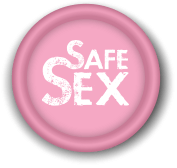The egg is the largest cell in the human body (12mm), a woman is born with millions of immature eggs, which are located in the ovaries. During the ovulation process, a number of eggs mature, and usually only one of them is released from the ovary, and makes its way to the fallopian tube and from there to the uterus.
The three stages in egg’s life:
Ovulation: The ovary releases an egg
Menstrual-related hormones cause the eggs to mature in the ovaries. About every 28 days, one ovum is “selected” in which several eggs mature, one mature egg then released from the ovary. This is the ovulation process. After release from the ovary, the egg moves into the fallopian tube, where it remains for only about 12 to 24 hours, during this time fertilization can occur. If the egg is not fertilized at this time, it is absorbed and menstruation (the menstrual bleeding) begins two weeks later.
There is a certain confusion between the concept of ovulation and the concept of “ovulation period”. Ovulation itself lasts for only a few seconds, when the egg separates from the ovary. The ovulation period is the fertile period during the month that lasts about two to three days around ovulation. This is actually the length of the window of opportunity during which one can get pregnant. This window consists of two factors: the lifespan of the egg – about 24 hours, and the lifespan of the sperm – about 48 to 120 hours.
A woman can get pregnant from two days before ovulation to the day after ovulation. If during the window of opportunity the egg did not meet the sperm, it dissolves.
Fertilization: A sperm meets an egg
A mature egg can be fertilized by a sperm cell at the edge of the fallopian tube during ovulation. The sperm makes its way up the vagina, through the cervix and through the uterus into the fallopian tubes. If a mature egg is in the fallopian tube, fertilization can occur. Very rarely, fertilization can occur even when the ejaculation was in the vaginal opening and not inside the vagina. Uterine contractions during sexual arousal and orgasm, help the semen “climb” up the vagina.
Technology can assist in making it possible to fertilize an egg, either by inserting sperm into the female body or by fertilizing an egg outside the body and then inserting the fertilized egg into the uterus.
Implantation: The fertilized egg attaches to the lining of the uterus and the pregnancy begins.
Most eggs are fertilized by sperm while in the fallopian tubes. The fertilized egg travels down the fallopian tube into the uterus. It can take a day or two. When the egg reaches the uterus, it can take root in the uterine lining (endometrium) and pregnancy will begin. Fertilized eggs that do not take root in the uterine lining (i.e. blighted ovum) are excreted in the next menstrual bleeding.
Key facts about ovulation
- An egg lives 12 to 24 hours after its emergence from the ovary.
- Usually, only one egg is released from the ovary at a time.
- Ovulation can be affected by mental stress, diet, illness or any disruption of routine (such as moving to another country, different climate and more).
- Some women may experience light bleeding (blood staining) or discharge during ovulation.
- Implantation of a fertilized egg usually occurs between 6 to 12 days after ovulation.
- Every woman is born with millions of immature eggs waiting for ovulation to begin – a woman is born with all her eggs.
- Menstruation may come even if there was no ovulation.
- Ovulation can occur even if there was no menstruation.
- Some women may experience some pain or discomfort in the ovarian area during ovulation in what is known as “mittelschmertz” (intermediate pain in German).
- If an egg is not fertilized, it is absorbed into the uterine wall and comes out during menstruation.
